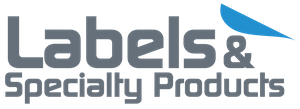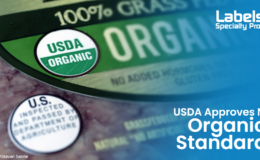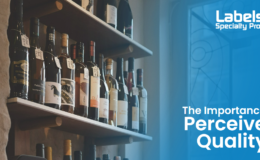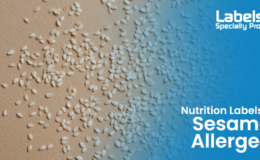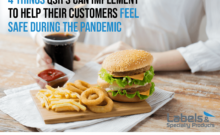Driven by impulse, consumers often base purchasing decisions on a product’s color, shape, and design, making a well-constructed label key to competitive marketing.
The way consumers shop has changed over time. Brand dominance off the shelf no longer guarantees sales in-store. Over the past few years, research has repeatedly shown that about 70 percent of purchase decisions are made after customers enter the store. At the shelf, buyers often take an average of two and a half seconds to make a purchasing decision.
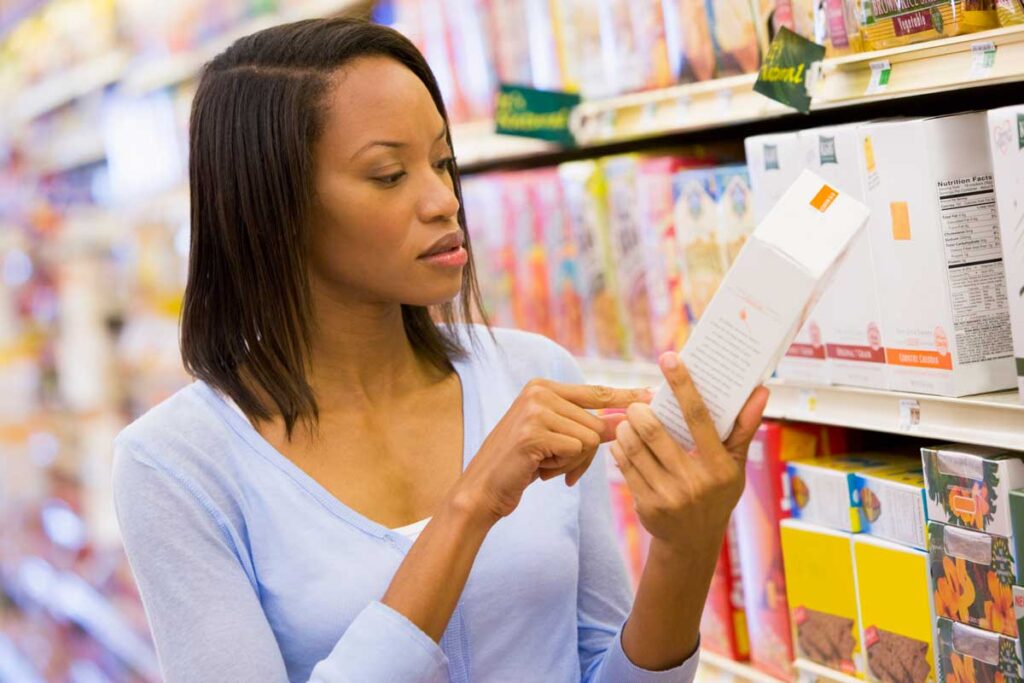
Whether you’re buying gourmet roasted coffee beans or salon-grade shampoo, labels serve as a product’s identity and information resource so that customers can distinguish one brand from countless others.
What Are the Design Elements of an Effective Product Label?
Logo, image, color, label face stock, and premium embellishments that speak to your target audience are the elements of an effectively designed label.
Consider Tropicana’s $35 million redesign campaign that resulted in a 20 percent drop in sales as consumers no longer connected the PepsiCo-owned brand with its famous product. Consumers feel an emotional bond with the appearance of a consistently branded product, which is why a label should reflect your brand’s primary personality.
Does your product offer eco-friendly incentives, which can be represented through a biodegradable face stock? Are “premium” or “luxury” your leading brand characteristics best expressed through metallic printing effects, embossed designs, and custom foil stamping? Or are simplicity and minimalism the goal, which can be achieved by using a transparent face stock?
Different product categories require labeling choices based both on aesthetics and durability in order to generate loyal customers:
Fruit, produce, packaged meat or fish labels must:
- Outlast refrigerated or frozen distribution and storage
- Hold up in wet or cold environments
- Withstand direct or indirect contact with food

Beverage labels must:
- Offer premium design as a central focal point to attract attention
- Weather high-speed production environments
- Handle ice and refrigeration, particularly wine, beer, and spirits labels
Gourmet food labels must:
- Market a premium product using full-color custom graphics and premium inks
Household and chemical labels must:
- Allow for branding in addition to warning and product information
- Use strong adhesives to withstand environmental conditions and chemical contents
Health and beauty products must:
- Survive moisture, heat, and humidity
- Upgrade using embossing, foil stamping, or foil labels for luxury products
- Opt for clear labels, sometimes called the “no-label look” for transparency
How Do Labels Meet Regulatory Requirements?
Label design may move products from shelves, but federal and state agencies are the invisible forces administering labeling laws for the good of consumers. In addition to marketing the story of your brand, labels offer the following essential information for smart buyers:
Ingredient Lists
The FDA regulates most packaged foods sold in the United States and has specific requirements for what elements a label must contain, namely a Nutrition Facts panel for food products and an Information Panel for cosmetics products.
Since cleaning products aren’t food, beverages, or drugs meant to be ingested, the FDA does not directly regulate the industry. However, makers are required by the Environmental Protection Agency to list ingredients that are active disinfectants or potentially harmful.
Product Warnings
Product labels warn consumers with requisite risk information, allowing them to decide whether an activity or a product’s benefits outweighs its risks. For example, the U.S. government has mandated various on-product label warnings to alert consumers to smoking’s dangers.
To help people avoid the health risks posed by food allergens, the FDA also enforces the Food Allergen Labeling and Consumer Protection Act of 2004, which includes all foods except poultry, most meats, certain egg products, and most alcoholic beverages.
Safe-Use Instructions
Cleaning products, cosmetics, and medicines are required to include “directions for safe use” on the prime or secondary label. Overusing a product or incorrect handling can have harmful consequences, so consumers must have proper use instructions. Using booklet labels offers an opportunity to go in-depth with step-by-step instructions.
Promotions and Coupons
Instant redeemable coupons (IRCs) are affixed to the exterior of a package in-store for point-of-purchase coupons, peel and scan coupons, mail-in rebates, and QR Codes for special campaigns. The double-layer adhesive attached to your products makes it easier to attract customers when they’re ready to buy.
How to Print Product Labels for Your Brand
A quality printing company knows that labeling solutions can bring your brand to life and help your products stand out. At Labels & Specialty Products, our experts can work within your budget and help you navigate the design and regulatory decisions needed to stay competitive. Contact us today to learn more about how we can help.
